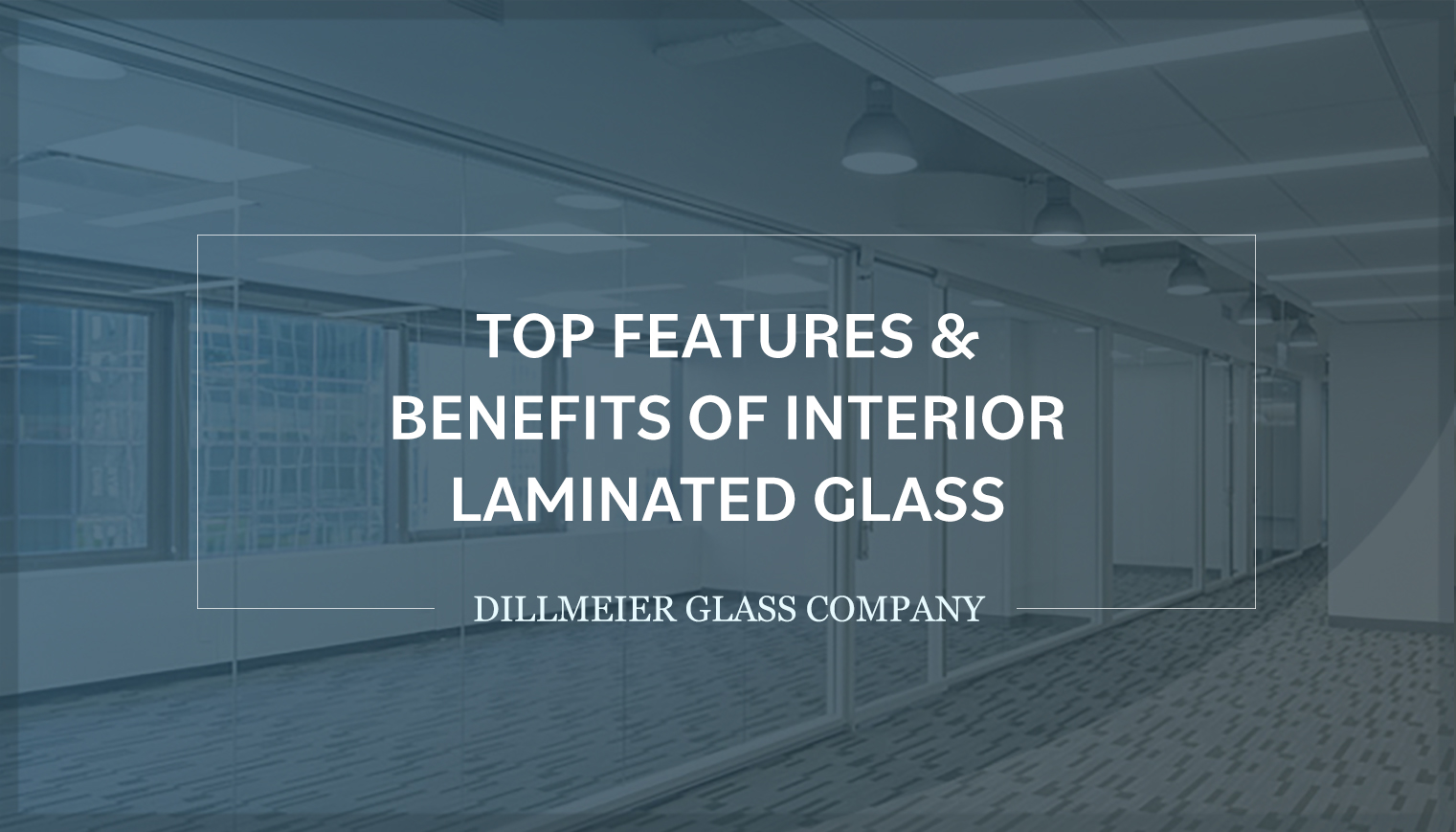Top Features & Benefits of Interior Laminated Glass

Whether seeking a stylish and decorative aesthetic or enhanced safety and security, laminated glass features many advantages that can elevate any interior space.
Suitable for a wide range of applications within restaurants, retail, and office spaces, the versatility of laminated glass makes it perfect for display cases, modular walls, dividers and partitions, stairways, and more.
Here’s a brief breakdown of this material’s many features, benefits, and uses.
What Is Laminated Glass?
The lamination process involves sandwiching resin interlayers between two glass lites. These protective layers can be clear, or contain fabric, metallic screens, and other decorative elements.
When laminating untreated float glass, enlist an experienced fabricator with temperature-controlled clean rooms, such as Dillmeier Glass Company. Doing so without technologically advanced equipment and experienced technicians risks missing deadlines, unhappy customers, and delivery delays.
There are also instances where International Building Code (IBC) regulations mandate laminated glass for applications such as glass railings above walking spaces.
Laminated Glass Features & Benefits
Laminated glass boasts enhanced safety, easy maintenance, durability, privacy, and more.
When laminating untreated float glass, enlist an experienced fabricator with temperature-controlled clean rooms, such as Dillmeier Glass Company.
Here’s a quick rundown of some of its most common attributes:
- Unique Safety Features: Should significant damage occur, laminated glass will remain together in web-like patterns instead of shattering into sharp, dangerous shards.
- Discourages “Smash & Grab” Crimes: Laminated glass interlayers act as protective barriers against such misdeeds.
- Increased Sound Transmission Class (STC) Ratings: Maintain privacy, soundproofing, and acoustics within interior spaces.
- Easy Maintenance: Laminated glass can be sanitized with a damp cloth and any gentle cleaning product.
- Versatility & Decorative Aesthetics: Create transparency while promoting natural sunlight otherwise unachievable with drywall or sheetrock.
- Strength & Durability: Laminated glass withstands regular wear and tear, and won’t scratch or fade over time.
- Green Properties: Discarded laminated glass can be recycled for cullet or other secondary uses.
Common Laminated Glass Applications & Uses
Whether utilized within an open conference room, intimate dining area, or a high-end retail setting, this decorative material can create various aesthetic appeal.
Note the following useful laminated glass applications:
-
Railings & Balustrades: Add depth and sophistication to hotel lobbies or office atria.
-
Modular Walls: Create a sense of openness and promote natural light throughout office spaces.
-
Partitions/Dividers: This shatter- and scratch-resistant material is ideal for high-traffic areas.
-
Office Furniture & Doors: Consider glass doors with accompanying furniture for an inclusive, contemporary feel.
-
Display Cases & Vitrines: Showcase products with elegance and style.
-
Shower Enclosures: Add decorative elements such as custom color-matching and back-painting.
Laminated Glass vs. Tempered Glass
Either of these are suited for most projects due to durability, strength, and specialized fabrication. However, a specific choice should depend on usage and application.
For higher traffic areas such as stairways, hallways, conference areas, and lobbies, laminated glass is recommended for its shatter-resistant properties, flexibility, and easy maintenance. And unlike plexiglass or acrylic, it maintains its optimal appearance over time.
Laminated Glass Best Practices
It’s best to work with an experienced fabricator utilizing advanced equipment and knowledgeable technicians, such as Dillmeier Glass Company. We can answer questions you may have and help determine the best processes.
Tell us how we can assist your next laminated glass project. We’d love to hear from you!


